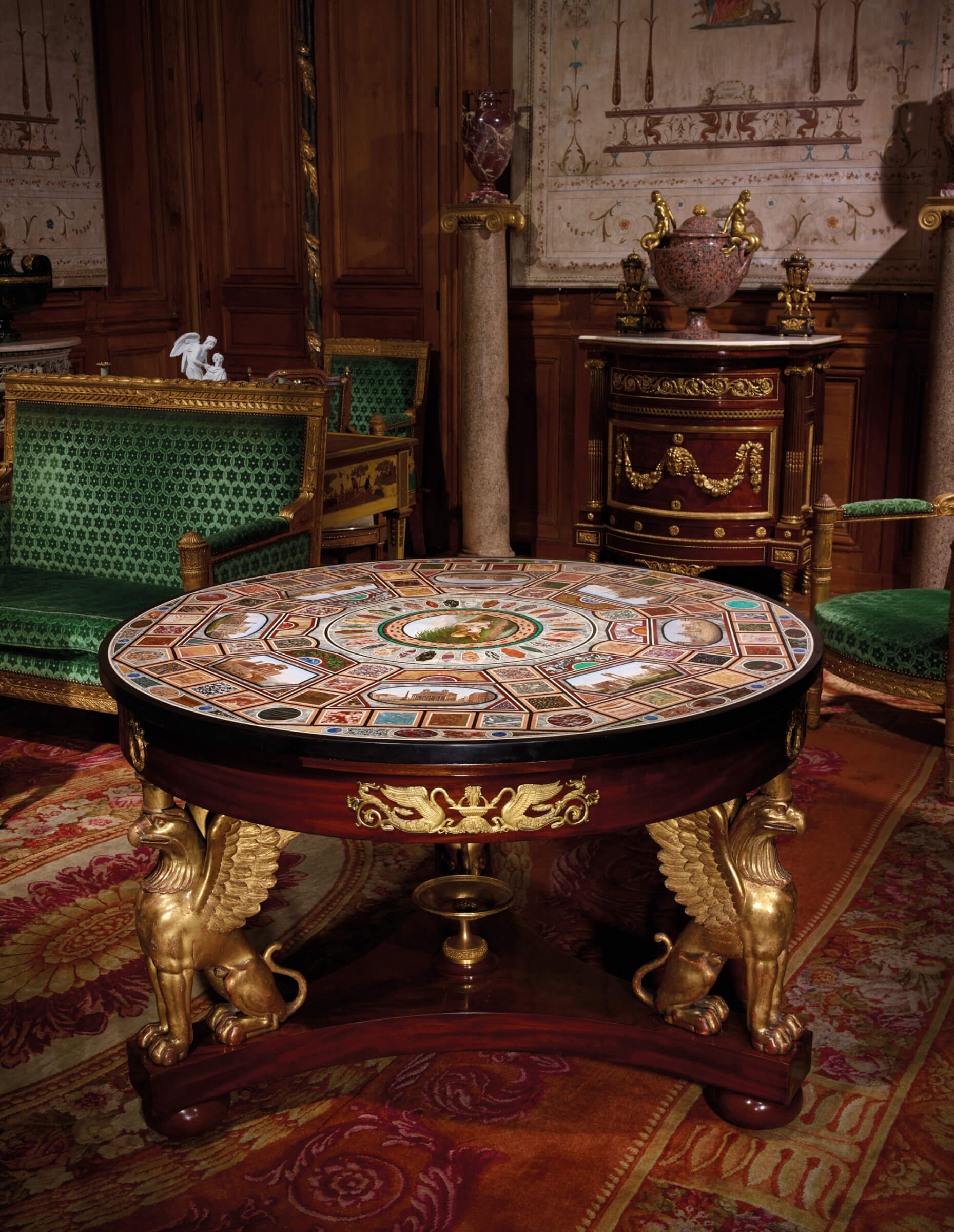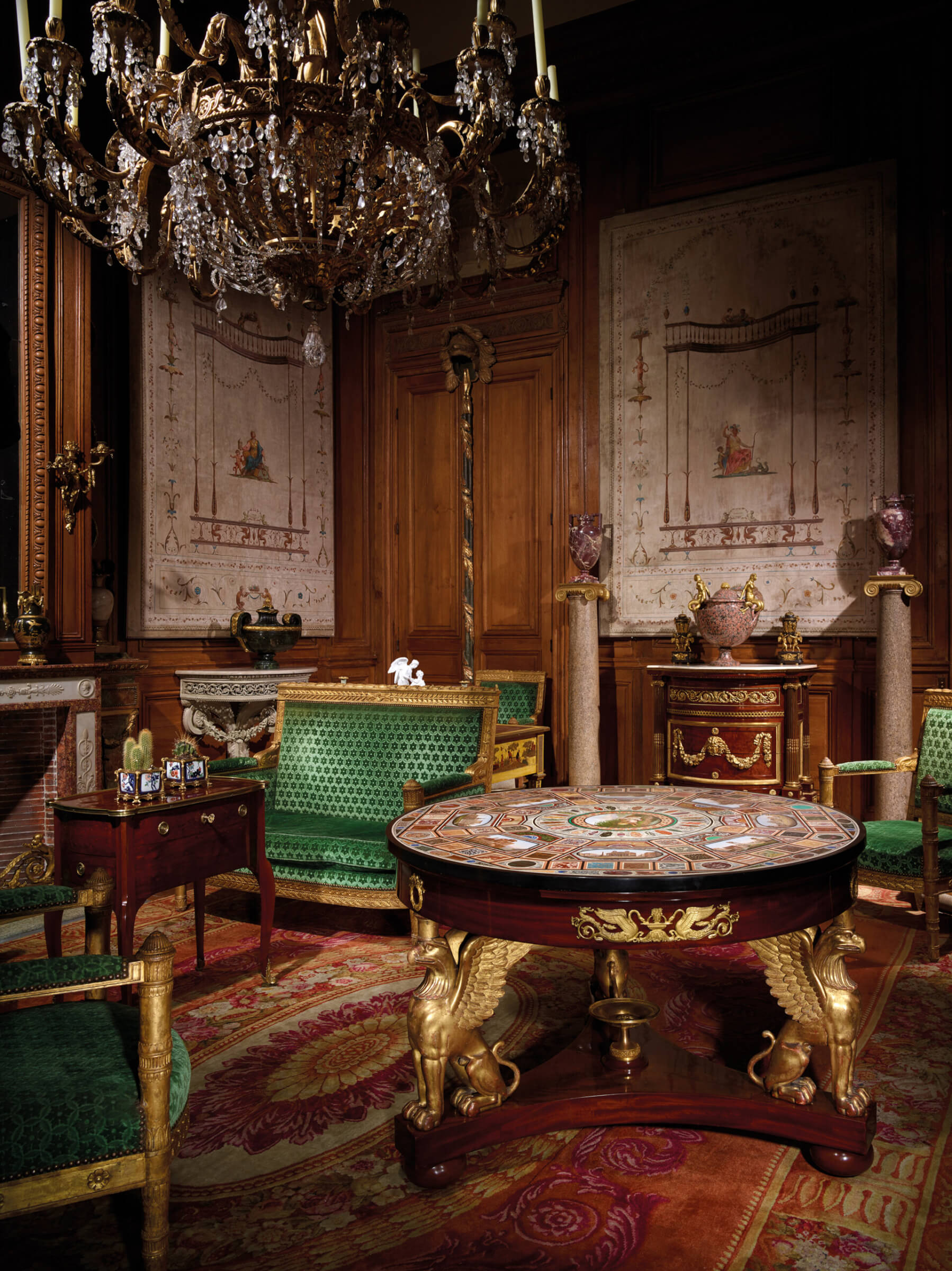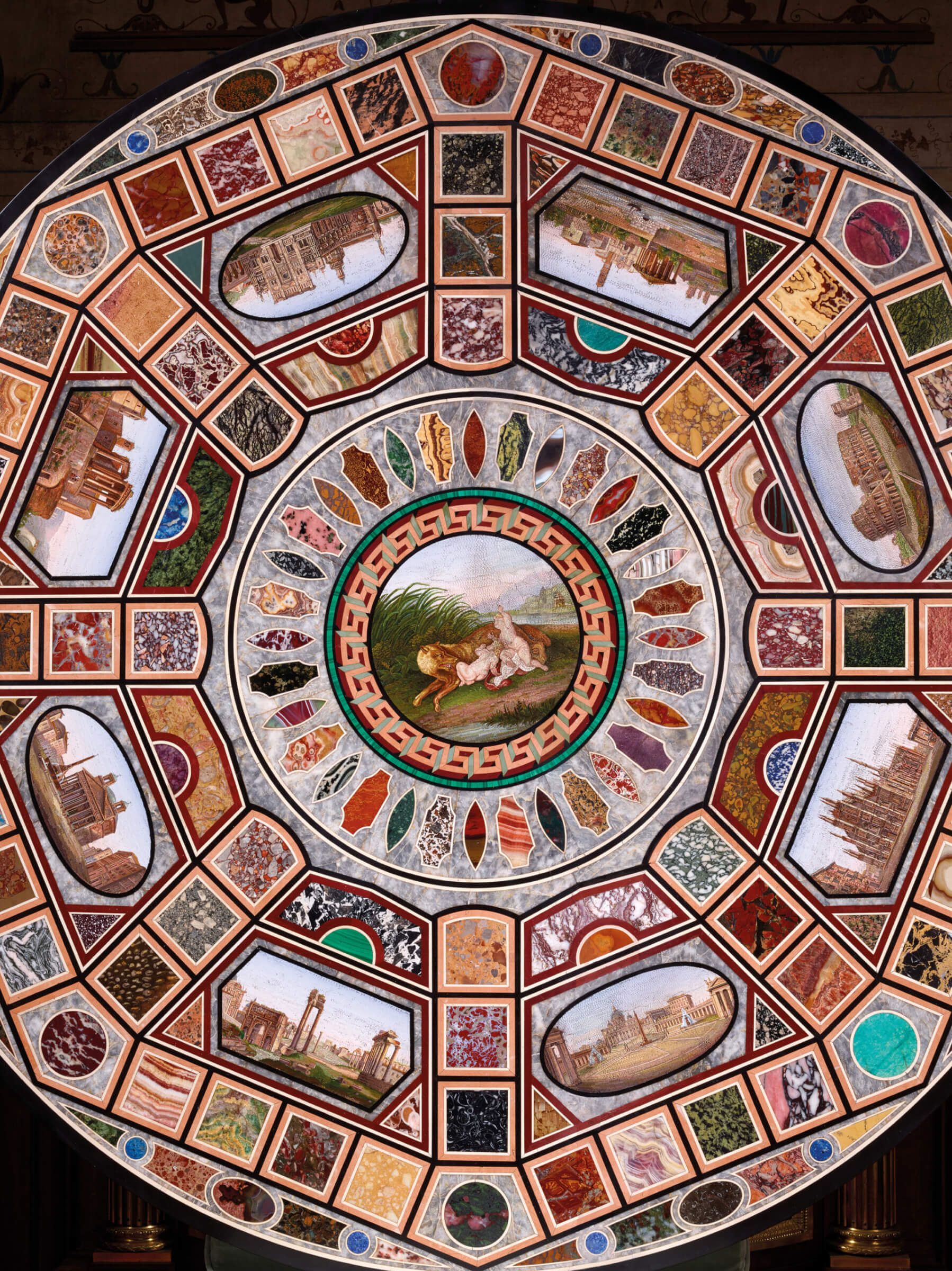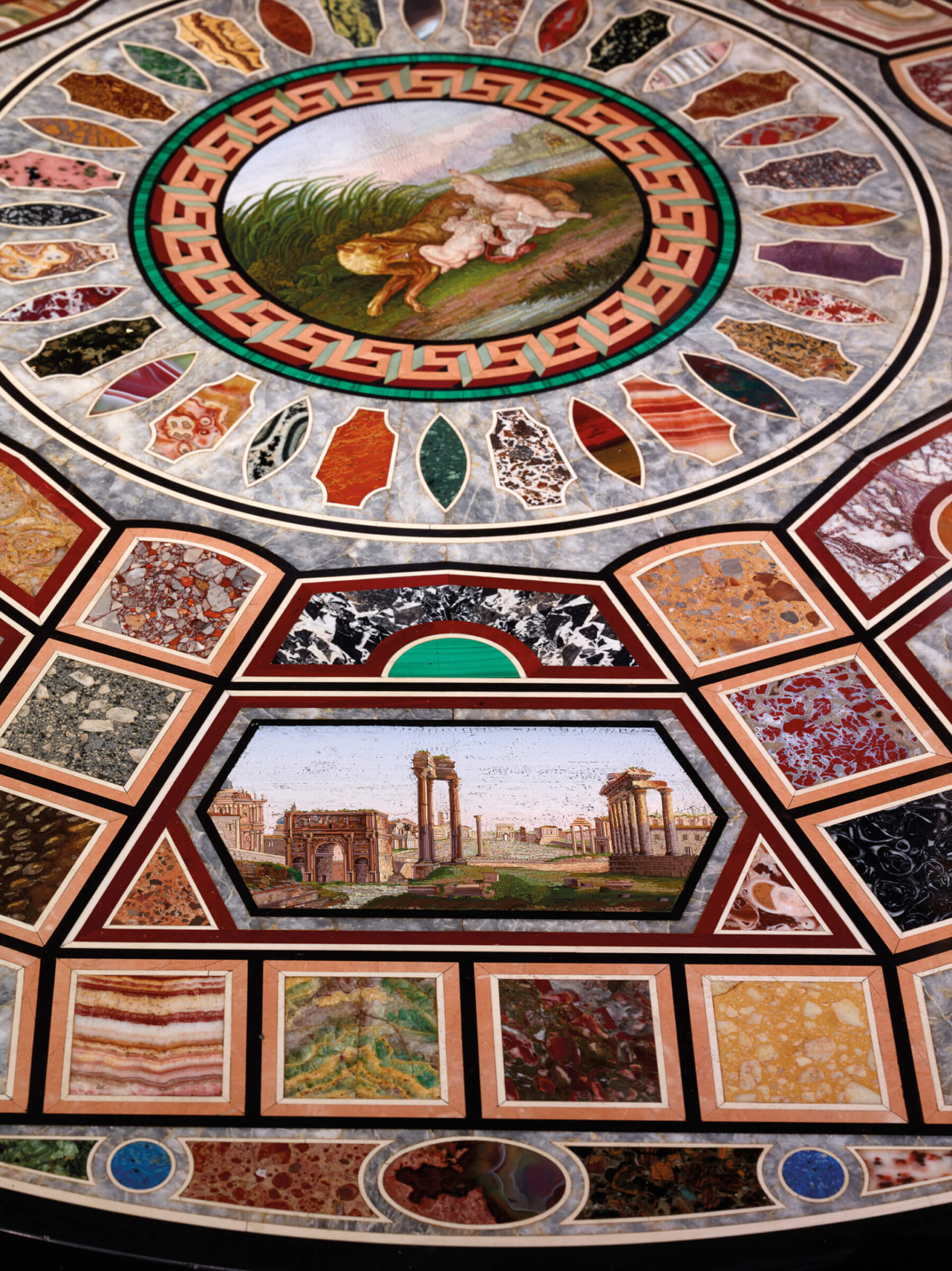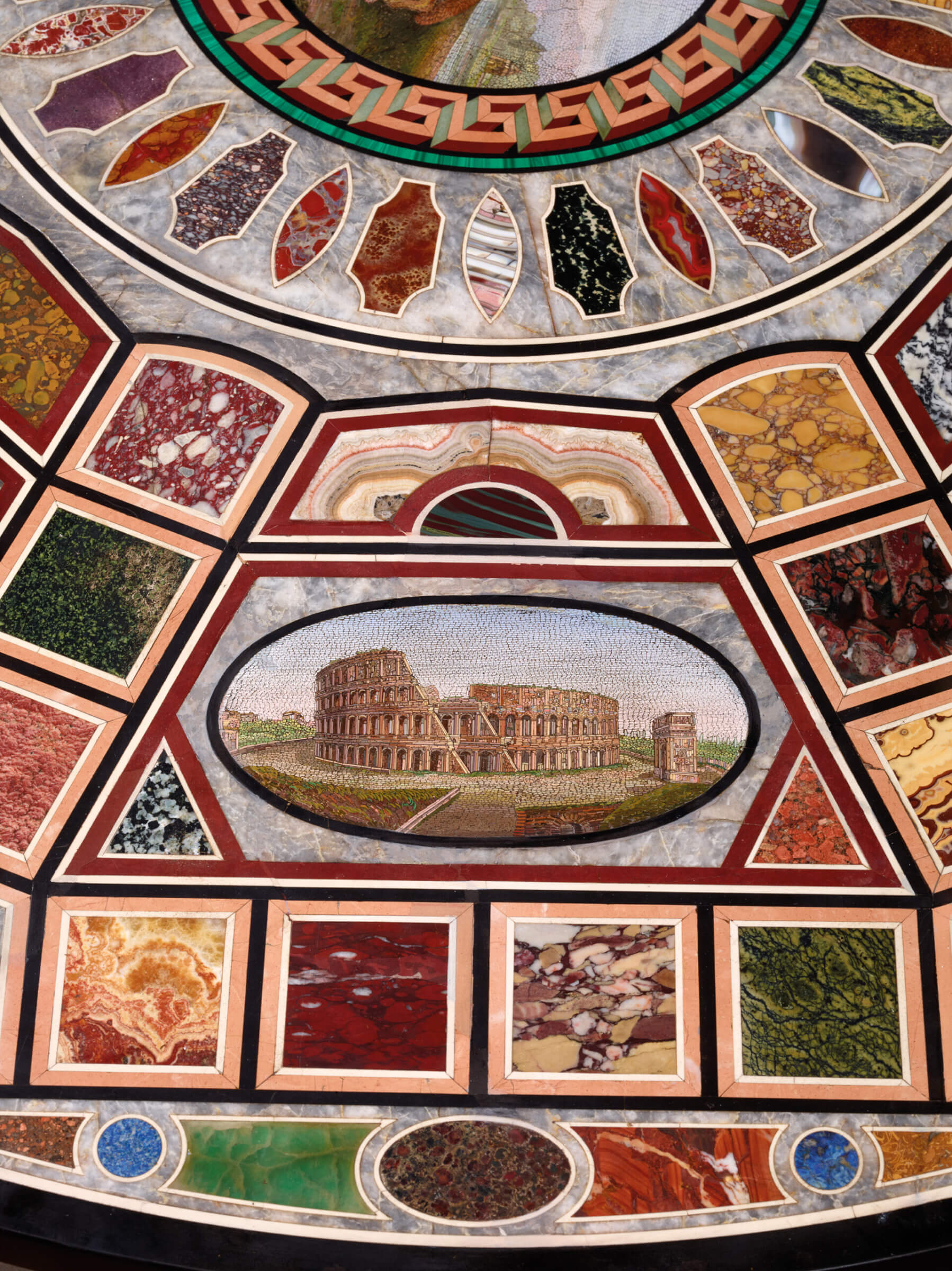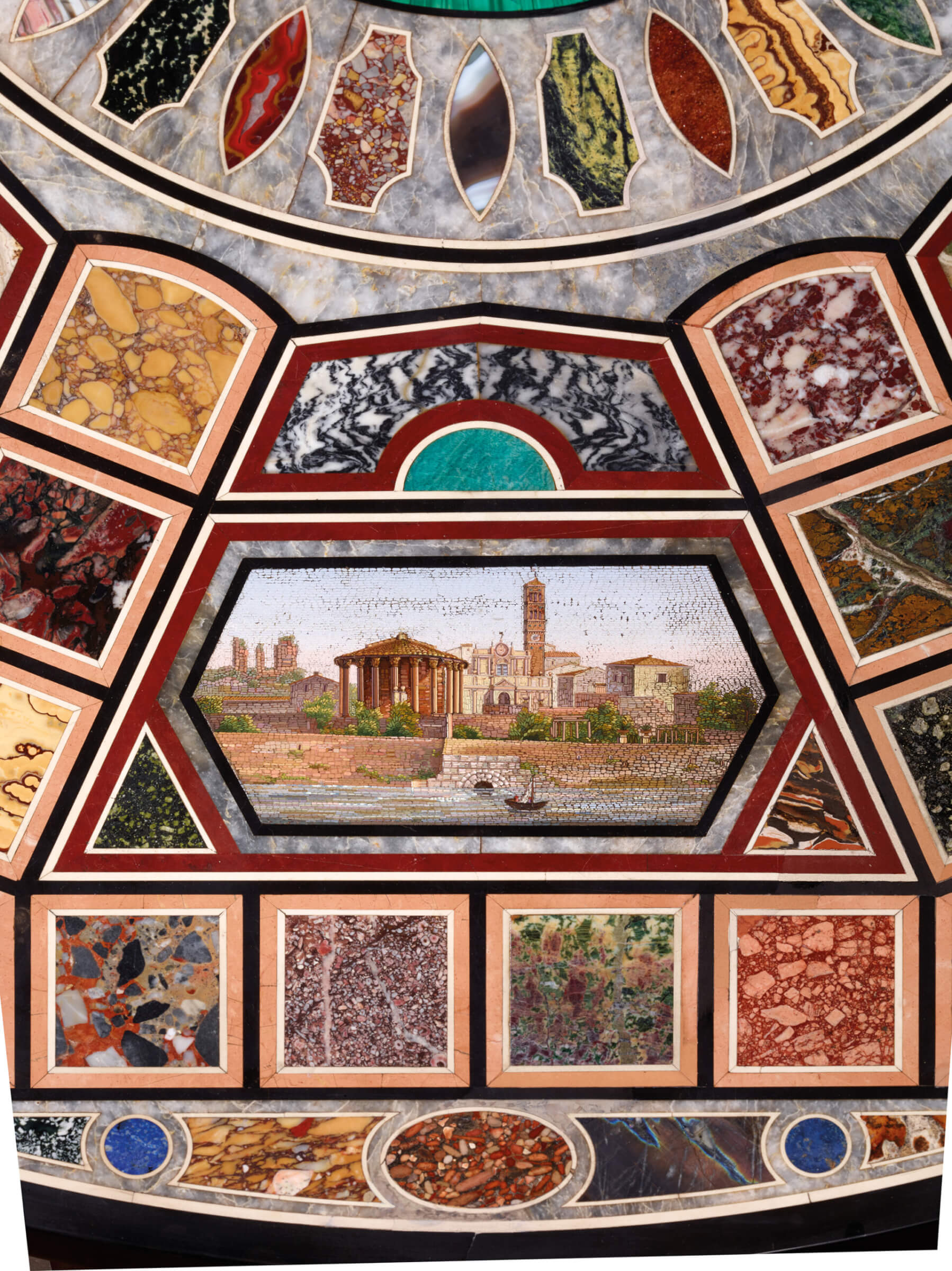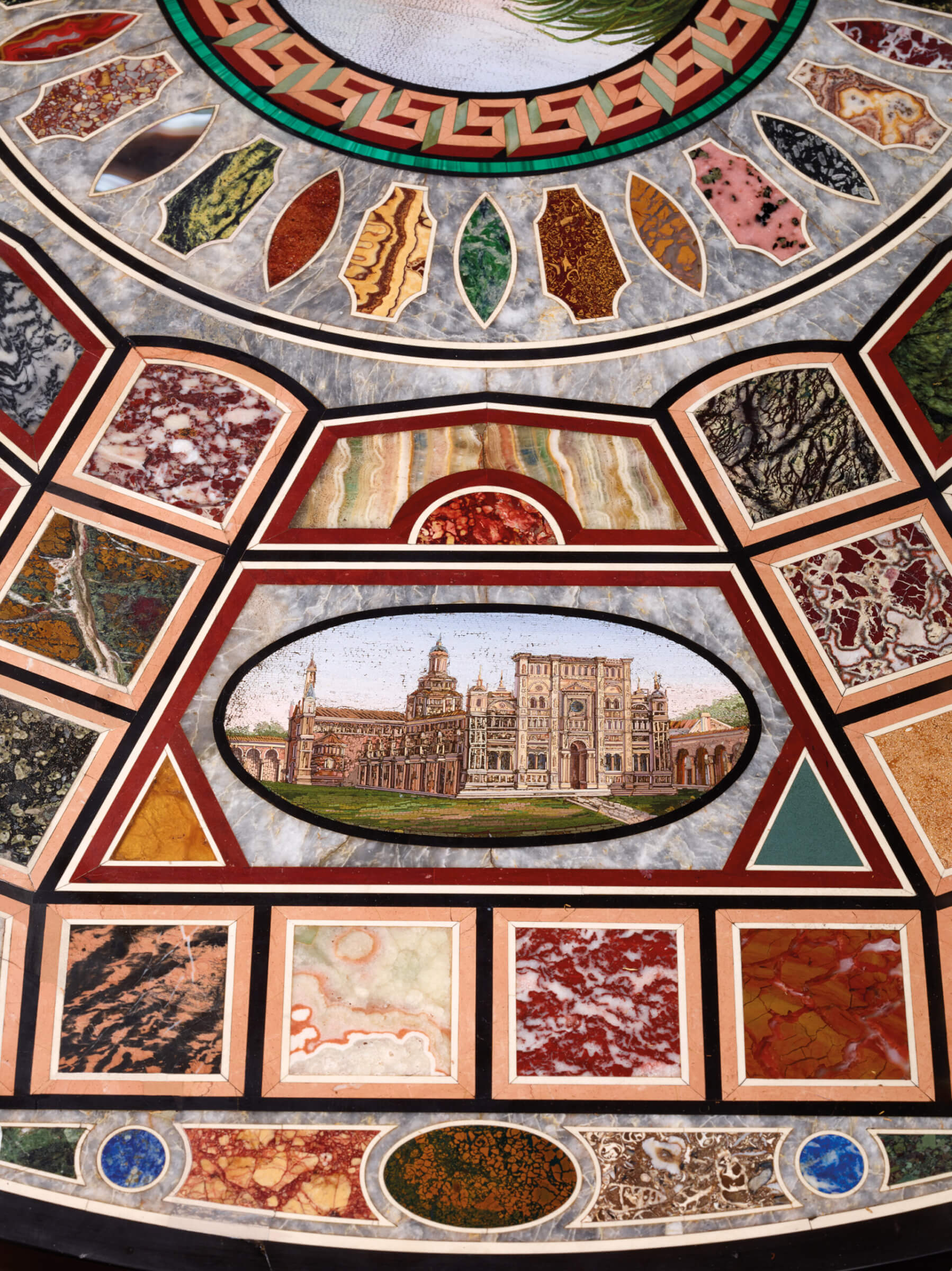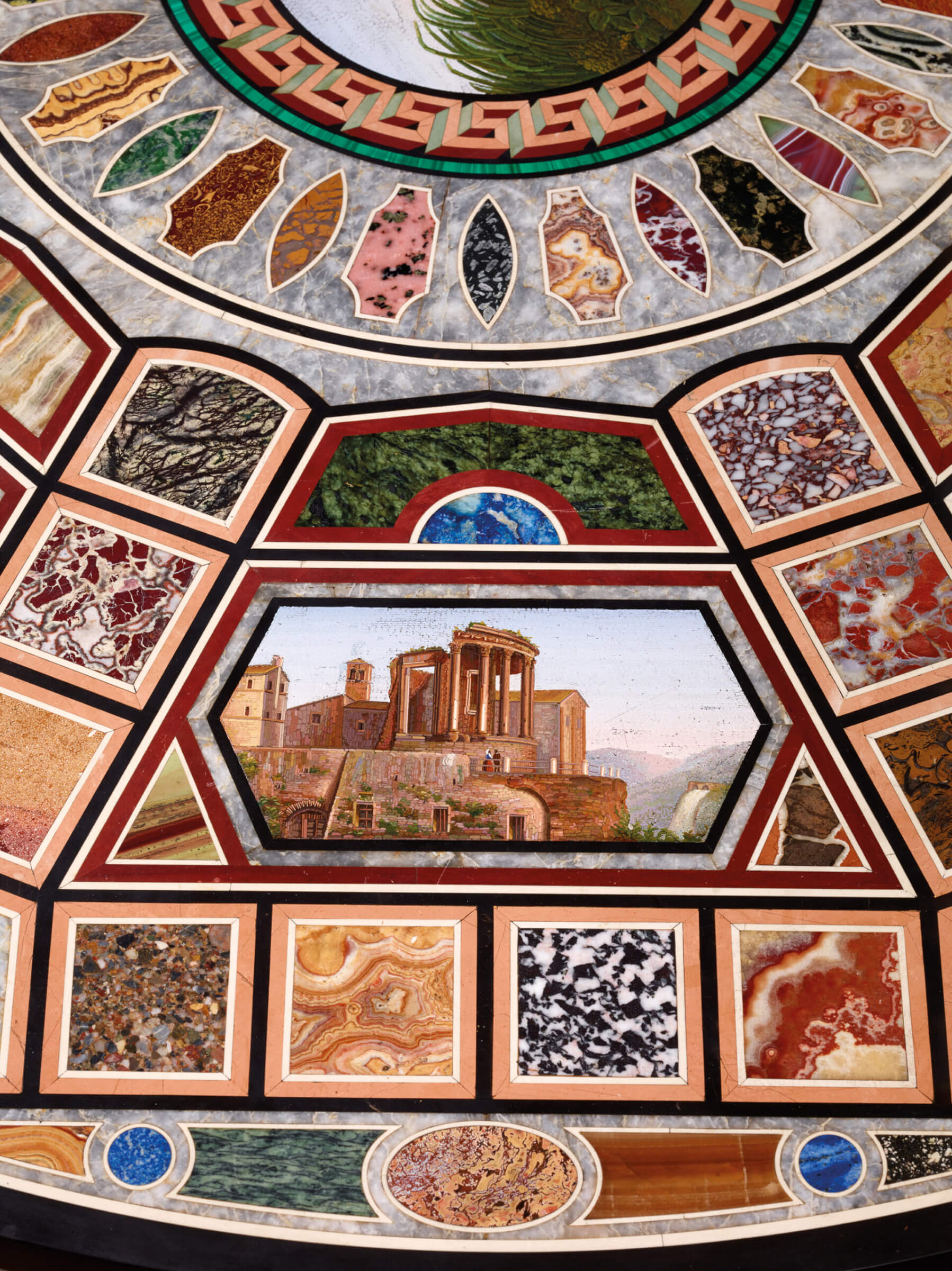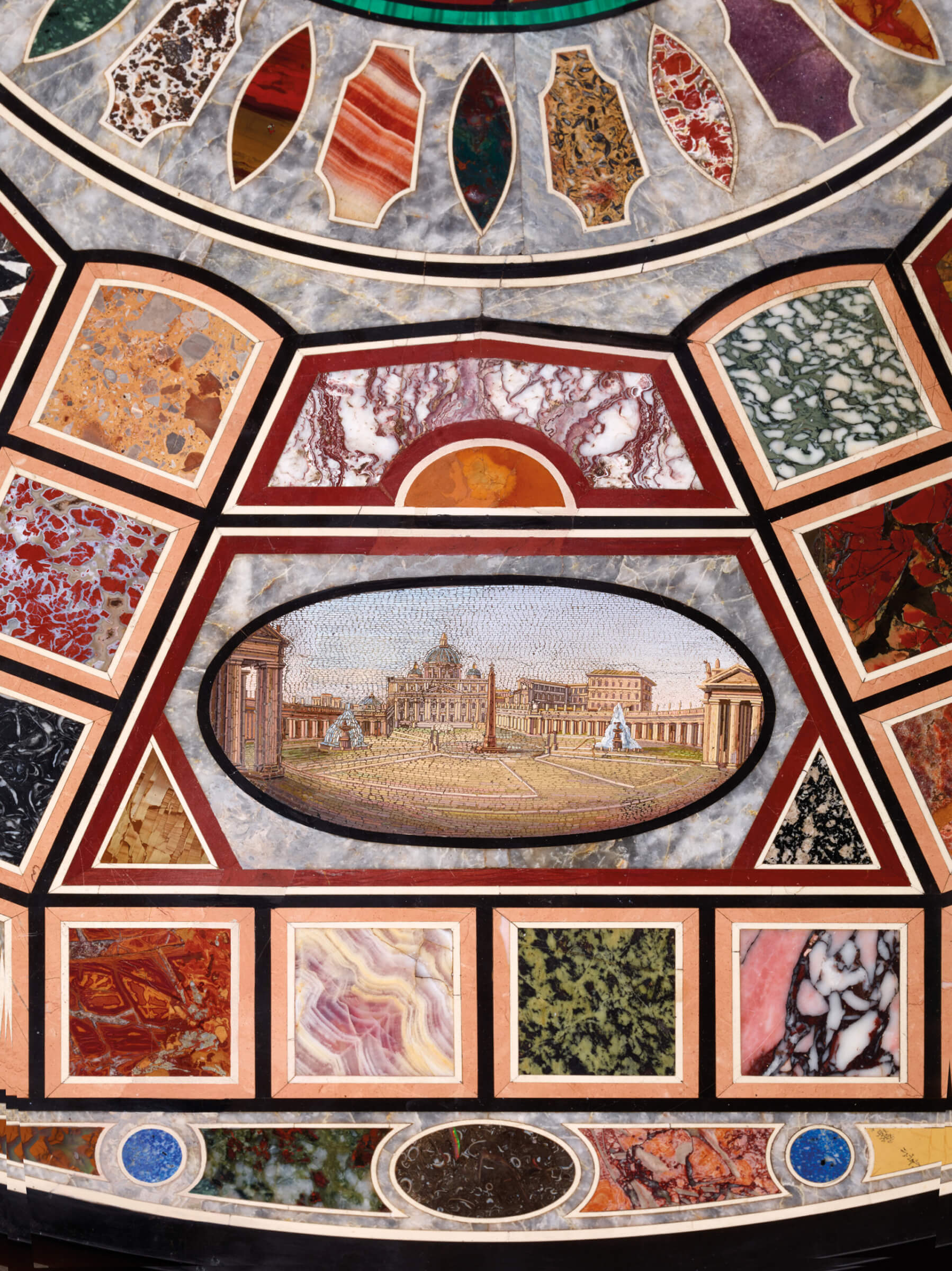

Marquetry of hard stones and micromosaics.
D. of tabletop: 115,2 cm. (45 ¼ in.).
PROVENANCE: acquired in Rome in 1835 by Jean-Baptiste Mellerio (1765-1850), the famous jeweller to Queen Marie-Antoinette, then to the court of Napoleon I, whose family of Lombard origin had settled in France during the reign of Francis I; collection of Jean-Baptiste Mellerio at the Château de la Doutre, in Ozoir-la-Ferrière (Seine-et-Marne); then descendants to the present day.
STATE OF CONSERVATION: This extraordinary tabletop, a very comprehensive collection of jaspers and marbles, was damaged when a chandelier fell at the Château of La Doutre during the war. A campaign of conservative and reversible restoration was carried out in our workshops so as to return this masterpiece to its original state.
TEXT AND STUDIES: Dr Anna Maria Massinelli, Professor of Art History at the Brera Academy of Fine Arts, Milan.
The Mellerio lithotheque constitutes a testament to Caramelli’s fascination for the mineral world. The main core of the samples making up the opulent Mellerio table consists of what are referred to as marmora romana, a term designating materials whose extraction and use date back to the imperial Roman period, when a veritable craze for polychrome marbles emerged and each territory of the empire made its contribution of stone to the Eternal City: Spain, Gaul, Greece, Asia Minor, Egypt, Tripolitania, Numidia, Mauritania, and Italy. The 180 lapidary samples that make up the sophisticated geometry of the table are set against a background of bardiglio nuagato marble, while its different sections are outlined by fine borders in black and white marble and Rosso Antico marble, marmor taenarium, from the promontory of the ancient Cape Tenaro, in Greece.
This lithotheque is an exquisite work of lapidary art, capable of sublimating this poignant reminiscence of Antiquity, which had captivated generations of Grand Tourists, enamoured of the charm of the Eternal City. It also bears witness to a prolific period from the point of view of collectionism and studies, which saw the passion for lithic materials shift from hedonistic aesthetic satisfaction to a scientific discipline in its own right.
